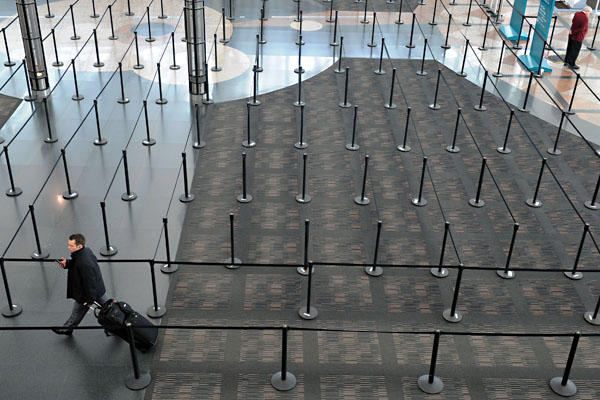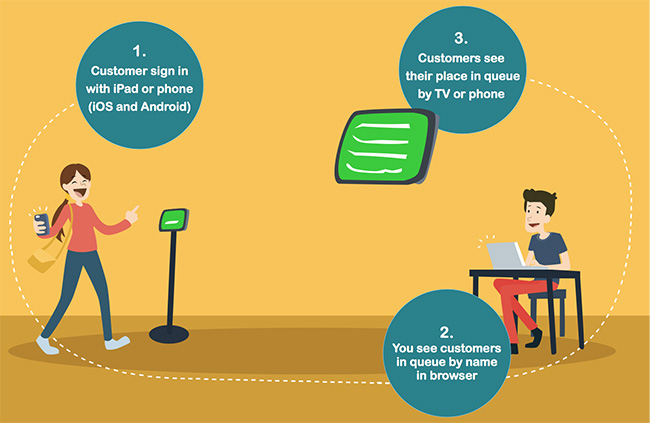Every business should focus on the customer. Queue barriers are
ineffective at doing that.
How do we provide the best queue management
system across various industries?

Picture this: you are at the airport, between you and the check-in desk
there are miles of rope and barriers - what do you do? You know that you
should enter the queue-maze, but there is nobody in it.
Can you approach the desk outside of the queue and take the risk? Or do
you have to run left and right for the amusement of the airline
employees watching you?
Queue barriers are an awful way to manage a waiting line. A location
using this kind of system essentially sees their visitors as mindless
cattle.
While we can somewhat understand such frigid approach at busy
international airports, seeing this used at banks, museums or state
offices is absurd.
Maybe these locations aren't concerned about queue management or
customer service. Maybe they don't care about you at all.
What’s wrong with queue dividers?
It forces visitors to take an unnecessary path. It is just
frustrating to walk 20 feet left and right multiple times, when the
destination is 5 feet in front of you. Even worse with luggage or a
shopping basket.Once in the queue, there is no (easy) way out. Whether you want
to pick up another purchase or realize you are in the wrong line –
it’s either a lot of "Excuse-me’s" or limbo time. Good luck
getting back in!Some location use ropes to create separate lanes. In theory to
straighten the lines and thus create some order. In practice it
usually is to make it impossible for you to switch lines, when
there is someone holding up yours.The unnecessary path is totally ridiculous when you still have
to zig-zag run the constructed maze even if there are no people
waiting.You can’t relax. In a serpentine maze, you can’t ever feel
comfortable! You can’t even sit on your own luggage not to mention a
couch or a chair. Instead you have to constantly shift tiny lengths
or face the wrath of people behind you.It’s passive. Often you have to wait a long time before being
told that you are in the wrong line or the service is not currently
available.
Visitors are happy to engage beforehand and let you know about their
needs. Especially if they see this helping to make their visit
faster and better.

Your visitors are not cattle. Treat them better!
To use Qminder, it’s as easy as just setting up an iPad on site.
Visitors can then choose the service they need and enter their name.
Then visitors know that they are now in the virtual line and you have a
head start to provide excellent customer service. Some of them might
even have a smartphone and commit to your location from distance with
our free smartphone app.




